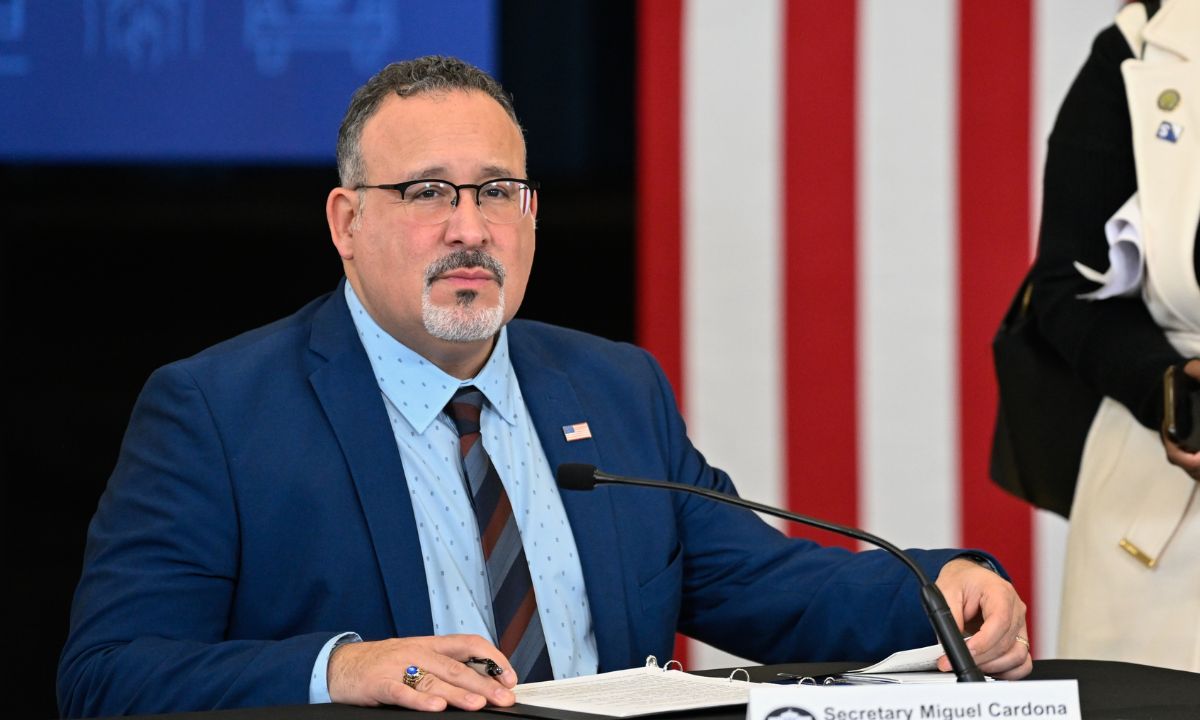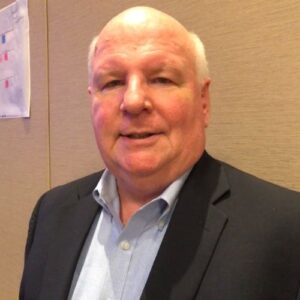Cardona Is Inviting States to Create Innovative Exams. 4 Ways They Can Start
State leaders should start engaging communities, gathering eager innovators, listening to myriad perspectives and learning from one another — now.

Get stories like this delivered straight to your inbox. Sign up for The 74 Newsletter
When the head of the federal authority that compels states to administer standardized tests concedes that those exams have not always met the mark and invites states to create a system that is more useful to students, families and educators, state education leaders must seize the moment before it slips away.
In a November letter, Secretary of Education Miguel Cardona encouraged chief state school officers to rethink state assessment programs and offered guidance on how to do it using the Innovative Assessment Demonstration Authority. This program, tucked into the federal Elementary and Secondary Education Act, allows approved states to pilot new assessment approaches and to scale them statewide over time.
Although the authority has been around for nearly a decade, many chiefs have shrugged it off as irrelevant — having too many requirements, affording too little time and providing no additional funding for exploring new methods of assessment. Only a few states have bothered to apply; of those, some were not selected, and two that were felt overly constrained and dropped out.
But in Cardona’s letter, we see a fresh federal desire to support states with assessment innovation, through the authority or otherwise. And that matters if states are to finally create one coherent system to measure learning and report progress that is relevant and meaningful — not just to federal policymakers, but also to educators, students and families.
Two things stood out to us. In addition to clarifying flexibilities in some of the technical requirements, the letter encourages chiefs to enter planning status with the department before submitting a formal application, and to pursue funding through other federal programs.
Combined with other indications, like the recent waiver permitting Montana to pilot a program that administers smaller tests throughout the year instead of the current end-of-year assessment, the department is signaling that it wants to make assessment reform more feasible.
How might state leaders seize the moment? We suggest four steps:
First, take the pulse of impacted communities.
State leaders should begin by understanding how people at different levels of the education system see the benefits and drawbacks of current assessment and accountability methods. It’s important to know who favors change (and who doesn’t) and to address concerns early on.
Chiefs could do this through familiar methods like listening tours and town hall meetings, or go a step further to create design teams of students, parents, community advocates, educators and technical experts. Smart partnerships with organizations that convene and build the skills of district leaders, school leaders and educators; research institutions; research institutions; and leaders from the governor’s office, legislature and state Board of Education can also support assessment design and implementation.
Kentucky is one state that has successfully pursued this approach. After leading a Commissioner’s Listening Tour, Kentucky partnered with the Center for Innovation in Education to launch a comprehensive statewide coalition tasked with co-creating a new vision for education.
Engaging many parties to collaboratively design new assessment and accountability models helps build public and political will for change. People begin to support a new system when they see their needs and concerns represented in it — or, at least, when they feel listened to and understand the rationale for inevitable compromises.
Second, start a dialogue with the U.S. Department of Education.
Once state leaders have engaged design collaborators, they should reach out to the department to start a dialogue about their ideas. Then, they should make a formal request to enter planning status. Cardona’s letter clarifies that states can do this even if their vision for innovative assessments — and with it, their formal intention to apply to the authority — is still emerging. We see planning status as a low-stakes arrangement that states can request without having to complete a full proposal.
In this way, states can receive feedback on their nascent assessment designs. And, while non-binding, planning status can confer some formality to a state’s intentions, which can help garner support and funding back home.
Third, states should leverage other federal programs for funding.
Cardona’s letter suggests that states don’t have to fund assessment innovation entirely on their own; instead, it invites leaders to consider other federal funding sources, particularly the Competitive Grants for State Assessments program. Kentucky is one state that’s using program funds received in 2022 to design a new model for school and district accountability based on what it learns from districts that are piloting competency-based assessments of learning. The new state system that emerges may become codified in a future application.
Other federal grant programs, such as school improvement funds in Title I, may be even more useful in supporting local engagement in assessment innovation, as this money could be used in pre-planning and preparing to apply to the grant program.
Fourth, they should seek federal flexibility.
It’s true that states can layer new tests on top of federally mandated assessments without needing federal approval, or just charge ahead and ask forgiveness later. But we believe there’s now a more viable path toward having conversations about innovation out in the open. That’s how states can create a single system of assessments that generates information useful for state-level oversight while adding value to teaching and learning in the classroom.
State education leaders should move quickly, if they haven’t already started. They need to hit the ground running and start engaging communities across the state, gathering eager innovators, listening to myriad perspectives and learning from one another. Windows of opportunity can open and close as supporters move in and out of positions of influence, but a groundswell of local demand is hard to ignore.
We have seen how bold, sustained leadership that is informed and supported by changemakers on the ground can convince federal authorities to give something new a try. New Hampshire proved that in 2015 with its federal waiver for the Performance Assessment of Competency Education pilot, and we think the department is even more open-minded today.
One thing is certain: State education leaders can’t stand still. They must heed the department’s strong signals – and put them to the test.
Get stories like these delivered straight to your inbox. Sign up for The 74 Newsletter

;)


